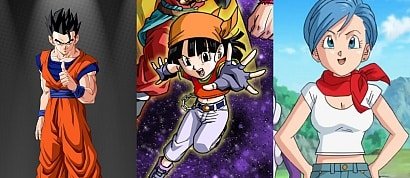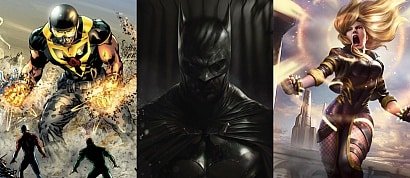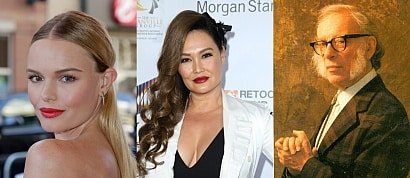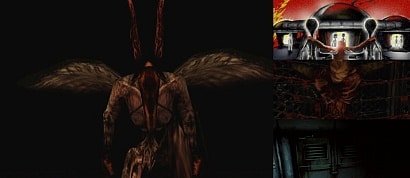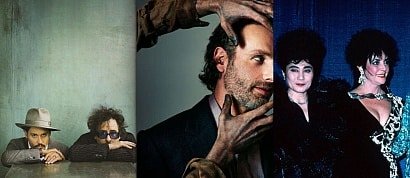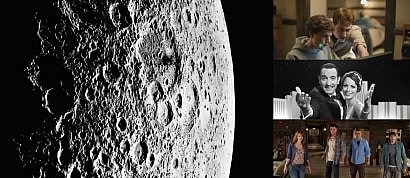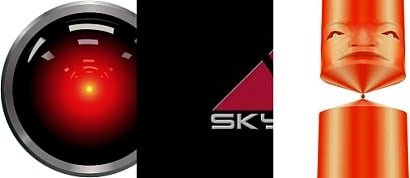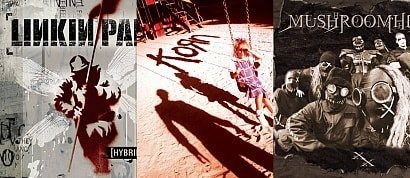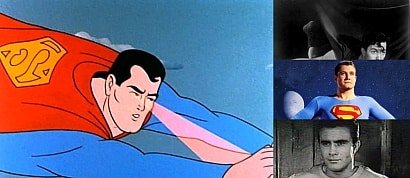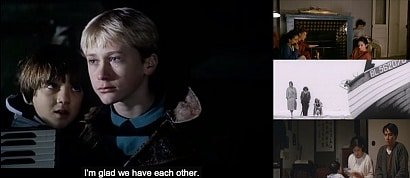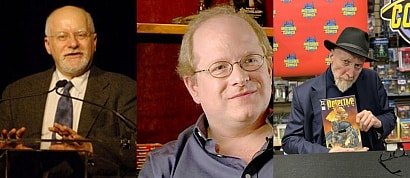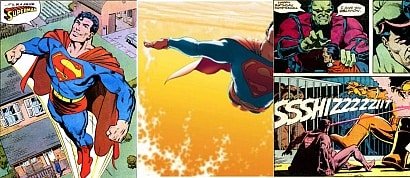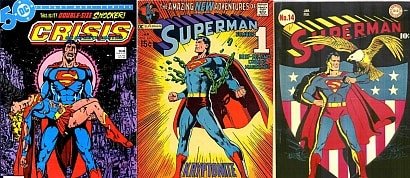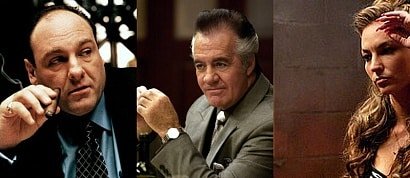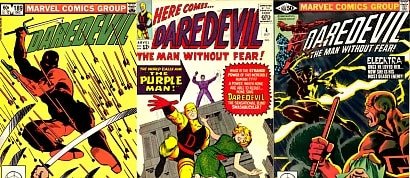This will be an ongoing list as I move through my extensive Superman comics collection. As I read more impressive stories, the list will be updated. For now, these are my 20 favorites, along with some honorable mentions.
Sort by:
Showing 21 items
Rating:
List Type:
The Man of Steel
APPEARS IN: THE MAN OF STEEL MINI-SERIES #1-6 (October – December, 1986)
WRITER: JOHN BYRNE / PENCILS: JOHN BYRNE
PLOT: With the planet Krypton on the brink of annihilation, scientist Jor-El and his wife Lara reluctantly send their unborn son (still gestating in a “birthing matrix”) to Earth in a spaceship. Found and raised as their own by the kindly Kents on their Smallville farm, that boy grows up to become Superman, a symbol for truth and justice in the big city of Metropolis. In his earliest adventures , the Man of Steel falls for vivacious reporter Lois Lane, forms an uneasy alliance with Gotham City vigilante Batman, earns the undying enmity of business mogul Lex Luthor, and uncovers the mysteries of his own otherworldly beginnings.
THOUGHTS: This will always be the definitive Superman comic for me. I realize that the changes that John Byrne made to the Superman mythos were borderline sacrilegious for many, particularly those who had already been longtime readers by 1986. Ma and Pa Kent were still alive, Lex Luthor was a corrupt billionaire rather than a mad scientist, and Clark Kent was never Superboy. However, when I read these comics I was around eight or nine years old and just becoming familiar with comics. I knew Superman primarily from the 1970s and 1980s films starring Christopher Reeves and this comic book version fell somewhat in line with the down-to-Earth portrayal embodied by Reeves. The series has its flaws, particularly in the excessive brooding of people like Lana Lang and even Clark himself. Nonetheless, Byrne (by far my favorite Superman artist) took risks with a new take on Superman and succeeded magnificently in making the character relatable, fun, and relevant again for the first time in decades.

WRITER: JOHN BYRNE / PENCILS: JOHN BYRNE
PLOT: With the planet Krypton on the brink of annihilation, scientist Jor-El and his wife Lara reluctantly send their unborn son (still gestating in a “birthing matrix”) to Earth in a spaceship. Found and raised as their own by the kindly Kents on their Smallville farm, that boy grows up to become Superman, a symbol for truth and justice in the big city of Metropolis. In his earliest adventures , the Man of Steel falls for vivacious reporter Lois Lane, forms an uneasy alliance with Gotham City vigilante Batman, earns the undying enmity of business mogul Lex Luthor, and uncovers the mysteries of his own otherworldly beginnings.
THOUGHTS: This will always be the definitive Superman comic for me. I realize that the changes that John Byrne made to the Superman mythos were borderline sacrilegious for many, particularly those who had already been longtime readers by 1986. Ma and Pa Kent were still alive, Lex Luthor was a corrupt billionaire rather than a mad scientist, and Clark Kent was never Superboy. However, when I read these comics I was around eight or nine years old and just becoming familiar with comics. I knew Superman primarily from the 1970s and 1980s films starring Christopher Reeves and this comic book version fell somewhat in line with the down-to-Earth portrayal embodied by Reeves. The series has its flaws, particularly in the excessive brooding of people like Lana Lang and even Clark himself. Nonetheless, Byrne (by far my favorite Superman artist) took risks with a new take on Superman and succeeded magnificently in making the character relatable, fun, and relevant again for the first time in decades.

APPEARS IN: ALL-STAR SUPERMAN #1-12 (January, 2006 – January, 2008)
WRITER: GRANT MORRISON / PENCILS: FRANK QUITELY
PLOT: Superman is dying. Duped by Lex Luthor into getting too close to the Sun, Superman’s cells have been overloaded with radiation, giving him a Superman version of cancer. Seriously confronting mortality for the first time, Superman must complete a sort of personal “bucket list” of twelve unique tasks - and of course save the world again - before time runs out. As if all of that were not disconcerting enough for our hero, the fact that Luthor seems none-too-concerned about being on Death Row is cause for still more worry.
THOUGHTS: Writer Grant Morrison, penciler Frank Quitely, and inker/colorist Jamie Grant reminded comic readers why Superman is so beloved the world over with this inspired 12-issue series. Given the task of making Superman relevant in the 21st century by DC Comics, Morrison and Quitely resisted the temptation to yet again reinvent the character and instead paid tribute to the classic Superman. Rather than shy away from the goofy storylines that plagued the Man of Tomorrow’s plots in the 1950s and 1960s, Morrison embraces them wholeheartedly and somehow makes them incredibly fun even for a cynical age. I haven’t always enjoyed Morrison’s plots in other titles, but his penchant for outlandish science fiction concepts works perfectly here. “All-Star Superman” is sentimental, quirky, and grounded all at once. Quitely’s drawings capture all of those facets beautifully. The real star, though, is Jamie Grant for his color work. I’ve never seen a comic book look better. This is a gorgeous, moving, and thought-provoking story that both hardcore Superman fans and casual readers will never forget.
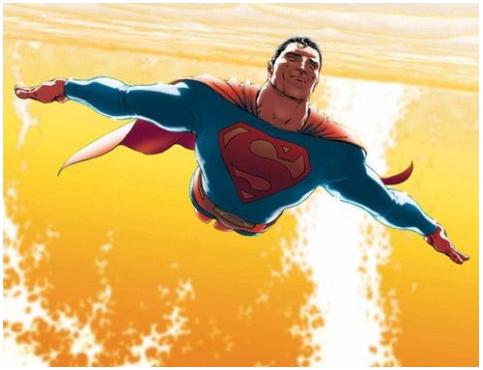
WRITER: GRANT MORRISON / PENCILS: FRANK QUITELY
PLOT: Superman is dying. Duped by Lex Luthor into getting too close to the Sun, Superman’s cells have been overloaded with radiation, giving him a Superman version of cancer. Seriously confronting mortality for the first time, Superman must complete a sort of personal “bucket list” of twelve unique tasks - and of course save the world again - before time runs out. As if all of that were not disconcerting enough for our hero, the fact that Luthor seems none-too-concerned about being on Death Row is cause for still more worry.
THOUGHTS: Writer Grant Morrison, penciler Frank Quitely, and inker/colorist Jamie Grant reminded comic readers why Superman is so beloved the world over with this inspired 12-issue series. Given the task of making Superman relevant in the 21st century by DC Comics, Morrison and Quitely resisted the temptation to yet again reinvent the character and instead paid tribute to the classic Superman. Rather than shy away from the goofy storylines that plagued the Man of Tomorrow’s plots in the 1950s and 1960s, Morrison embraces them wholeheartedly and somehow makes them incredibly fun even for a cynical age. I haven’t always enjoyed Morrison’s plots in other titles, but his penchant for outlandish science fiction concepts works perfectly here. “All-Star Superman” is sentimental, quirky, and grounded all at once. Quitely’s drawings capture all of those facets beautifully. The real star, though, is Jamie Grant for his color work. I’ve never seen a comic book look better. This is a gorgeous, moving, and thought-provoking story that both hardcore Superman fans and casual readers will never forget.

For the Man Who Has Everything
APPEARS IN: SUPERMAN (Vol. 1) Annual #11 (1985)
WRITER: ALAN MOORE / PENCILS: DAVE GIBBONS
PLOT: Wonder Woman, Batman, and Robin travel to Superman’s arctic Fortress of Solitude on Kal-El’s birthday but find him in a near-comatose state, the victim of a strange, parasitic plant that has attached itself to his chest. Soon enough they learn that Superman has fallen prey to a trap set by the alien madman called Mongul. Mongul reveals that the parasite is feeding off of their friend’s life force while making him hallucinate his heart’s greatest desire, which happens to be a normal life as a son, husband, and father on an imaginary planet Krypton. As Wonder Woman does her best to fend off the villain, Batman and Robin race to free the Man of Steel from the parasite before it kills him and Mongul kills them all.
THOUGHTS: This one comes from writer Alan Moore and artist Dave Gibbons, the stellar team that would later bring us The Watchmen. Throughout the 1980s, Moore in particular brought an unprecedented depth of character to superhero comics while simultaneously remaining true to their roots. Here he applies this approach to the most iconic superhero of all. Moore, through the plot device of a brainwashing parasite, gets directly to the heart of who Superman is at his core: a stranger who wants to belong . Perhaps most interestingly, we learn that Superman’s true wish is a purely selfish one, where he is not responsible for the safety of the rest of us. While humans dream of being as powerful as him, he dreams of being as powerless as them. Setting all that philosophical stuff aside, Gibbons’ art is dazzling and dramatic, especially during the final battle between Supes and Mongul, one of the coolest one-on-one comic book throwdowns you will ever read.

WRITER: ALAN MOORE / PENCILS: DAVE GIBBONS
PLOT: Wonder Woman, Batman, and Robin travel to Superman’s arctic Fortress of Solitude on Kal-El’s birthday but find him in a near-comatose state, the victim of a strange, parasitic plant that has attached itself to his chest. Soon enough they learn that Superman has fallen prey to a trap set by the alien madman called Mongul. Mongul reveals that the parasite is feeding off of their friend’s life force while making him hallucinate his heart’s greatest desire, which happens to be a normal life as a son, husband, and father on an imaginary planet Krypton. As Wonder Woman does her best to fend off the villain, Batman and Robin race to free the Man of Steel from the parasite before it kills him and Mongul kills them all.
THOUGHTS: This one comes from writer Alan Moore and artist Dave Gibbons, the stellar team that would later bring us The Watchmen. Throughout the 1980s, Moore in particular brought an unprecedented depth of character to superhero comics while simultaneously remaining true to their roots. Here he applies this approach to the most iconic superhero of all. Moore, through the plot device of a brainwashing parasite, gets directly to the heart of who Superman is at his core: a stranger who wants to belong . Perhaps most interestingly, we learn that Superman’s true wish is a purely selfish one, where he is not responsible for the safety of the rest of us. While humans dream of being as powerful as him, he dreams of being as powerless as them. Setting all that philosophical stuff aside, Gibbons’ art is dazzling and dramatic, especially during the final battle between Supes and Mongul, one of the coolest one-on-one comic book throwdowns you will ever read.

Last Son
APPEARS IN: ACTION COMICS (Vol. 1) #844 – 847, 851, Annual 11 (December, 2006 – July, 2008)
WRITERS: GEOFF JOHNS, RICHARD DONNER / PENCILS: ADAM KUBERT
PLOT: Investigating the crash-landing of a mysterious craft in the heart of Metropolis, Superman finds a young boy inside and is stunned to learn that the child is Kryptonian. As Clark and Lois make plans to adopt the child as their own, naming him Christopher Kent, they are attacked by General Zod and an army of Phantom Zone escapees. Zod wants Christopher at his side to aid in his plans to enslave all of Earth. Naturally, Superman steps up to defend his adopted home, but this time he has even more at stake. His son.
THOUGHTS: Richard Donner, director of 1978’s Superman: The Movie takes on the Man of Steel once more, this time with the help of his protégé, comic writer Geoff Johns. The two of them manage to piece together a story that fits fairly well into the continuity of the Superman comic mythos and also pays homage to the classic film (which, by the way, is still far and away my favorite superhero film). Any fan of the movie will enjoy the familiar references found in the dialogue, the most noticeable being the name of Superman’s adopted son, Christopher. Like a lot of Johns’ Superman work, it’s also plenty of fun to read, stuffed with lots of witty banter and dazzling fight scenes. He manages to pack in a hefty supporting cast of Kal-El’s greatest foes (Zod, Bizarro, Luthor, Metallo, etc.) without ever making their appearances feel forced. I’ve never been too much of a fan of Adam Kubert’s artwork, but I must say he turns in the best stuff I’ve ever seen from him in this undeniably enjoyable action epic.

WRITERS: GEOFF JOHNS, RICHARD DONNER / PENCILS: ADAM KUBERT
PLOT: Investigating the crash-landing of a mysterious craft in the heart of Metropolis, Superman finds a young boy inside and is stunned to learn that the child is Kryptonian. As Clark and Lois make plans to adopt the child as their own, naming him Christopher Kent, they are attacked by General Zod and an army of Phantom Zone escapees. Zod wants Christopher at his side to aid in his plans to enslave all of Earth. Naturally, Superman steps up to defend his adopted home, but this time he has even more at stake. His son.
THOUGHTS: Richard Donner, director of 1978’s Superman: The Movie takes on the Man of Steel once more, this time with the help of his protégé, comic writer Geoff Johns. The two of them manage to piece together a story that fits fairly well into the continuity of the Superman comic mythos and also pays homage to the classic film (which, by the way, is still far and away my favorite superhero film). Any fan of the movie will enjoy the familiar references found in the dialogue, the most noticeable being the name of Superman’s adopted son, Christopher. Like a lot of Johns’ Superman work, it’s also plenty of fun to read, stuffed with lots of witty banter and dazzling fight scenes. He manages to pack in a hefty supporting cast of Kal-El’s greatest foes (Zod, Bizarro, Luthor, Metallo, etc.) without ever making their appearances feel forced. I’ve never been too much of a fan of Adam Kubert’s artwork, but I must say he turns in the best stuff I’ve ever seen from him in this undeniably enjoyable action epic.

Birthright
APPEARS IN: SUPERMAN: BIRTHRIGHT #1-12 (September, 2003 – January, 2004)
WRITER: MARK WAID / PENCILS: LEINIL FRANCIS YU
PLOT: Gifted with the incredible powers of his alien heritage, young journalist Clark Kent struggles to find his identity and purpose in a world beset with cynicism, greed, and terrorism. Though his quest will lead him to become Superman, he finds it harder than expected to win over the trust of humanity, especially with the demented genius of Lex Luthor working against him.
THOUGHTS: Of the multitude of Superman origin reboots and revamps that have been published over the 75+ years since the Man of Steel's first appearance, "Birthright" is probably the most mature rendering of the character. I don't mean 'mature,' in the sense of too violent or sexy for kids. I mean mature in that it is the most well-rounded, psychologically compelling, and thematically complex of the lot. Waid understands Superman in all of his complexity as both a character and a symbol about as well as anyone I'm aware of. Thankfully, Waid restrains himself from indulging completely in the dark and grumpy portrayal of Superman he gave us in "Kingdom Come." Thus the Clark/Kal-El of "Birthright" is more believable as an actual living, breathing person than in just about any other printed work I've encountered. Leinil Yu's pencils seem inconsistent in style and quality to me, but at times his work has mind-boggling detail and powerful emotional resonance. The color work of Dave McCraig is outstanding and really makes Yu's best moments shine. It's not my favorite interpretation of the origin. The "Man of Steel" mini-series will always have that position, based on sentimentality and John Byrne's incredible art. But "Birthright," from a quality perspective, is likely the best.

WRITER: MARK WAID / PENCILS: LEINIL FRANCIS YU
PLOT: Gifted with the incredible powers of his alien heritage, young journalist Clark Kent struggles to find his identity and purpose in a world beset with cynicism, greed, and terrorism. Though his quest will lead him to become Superman, he finds it harder than expected to win over the trust of humanity, especially with the demented genius of Lex Luthor working against him.
THOUGHTS: Of the multitude of Superman origin reboots and revamps that have been published over the 75+ years since the Man of Steel's first appearance, "Birthright" is probably the most mature rendering of the character. I don't mean 'mature,' in the sense of too violent or sexy for kids. I mean mature in that it is the most well-rounded, psychologically compelling, and thematically complex of the lot. Waid understands Superman in all of his complexity as both a character and a symbol about as well as anyone I'm aware of. Thankfully, Waid restrains himself from indulging completely in the dark and grumpy portrayal of Superman he gave us in "Kingdom Come." Thus the Clark/Kal-El of "Birthright" is more believable as an actual living, breathing person than in just about any other printed work I've encountered. Leinil Yu's pencils seem inconsistent in style and quality to me, but at times his work has mind-boggling detail and powerful emotional resonance. The color work of Dave McCraig is outstanding and really makes Yu's best moments shine. It's not my favorite interpretation of the origin. The "Man of Steel" mini-series will always have that position, based on sentimentality and John Byrne's incredible art. But "Birthright," from a quality perspective, is likely the best.

APPEARS IN: KINGDOM COME mini-series # 1 - 4 (May, 1996 – August, 1996)
WRITER: MARK WAID / ART: ALEX ROSS
PLOT: Decades into the future, a younger breed of violent vigilantes have taken over the superhero business. Lois Lane died years earlier and Superman, having lost his strongest connection to humanity, has become a hermit, sequestered away in his Fortress of Solitude. Leaderless, Earth’s old guard of superheroes have lost hope and gone their separate ways. When a cataclysmic disaster strikes America’s heartland, it is left to Wonder Woman to convince the retired Man of Steel to once again don the red cape and teach the youngsters what it means to do the right thing. Will Superman be able to restore order to a world gone mad in his absence? On which side of the battle will former allies like Captain Marvel and Batman land? And, most importantly, how good of an idea was it to unleash a disgruntled and detached Superman upon the world?
THOUGHTS: You know, I’m not typically a fan of a darker, morally ambiguous Superman. But the fact is this story was done so very well that I can’t ignore the quality and must rate it high on my list. In some ways, what “The Dark Knight Returns” did for Batman, “Kingdom Come” does for Superman. Writer Mark Waid gives Supes a level of psychological complexity never seen before. He’s grim, grizzled, and at times just plain scary. The story itself is an excellent commentary on that eternal debate as to just how relevant Superman and his values are in a world that’s far more cynical and complex than when he first showed up. The truth is, Alex Ross’s astounding artwork alone is worthy of this one being admitted onto my list. “Kingdom Come” may not be a lot of fun to read, but I guarantee that you will not be able to stop thinking about it for a long time once you’ve finished reading it.

WRITER: MARK WAID / ART: ALEX ROSS
PLOT: Decades into the future, a younger breed of violent vigilantes have taken over the superhero business. Lois Lane died years earlier and Superman, having lost his strongest connection to humanity, has become a hermit, sequestered away in his Fortress of Solitude. Leaderless, Earth’s old guard of superheroes have lost hope and gone their separate ways. When a cataclysmic disaster strikes America’s heartland, it is left to Wonder Woman to convince the retired Man of Steel to once again don the red cape and teach the youngsters what it means to do the right thing. Will Superman be able to restore order to a world gone mad in his absence? On which side of the battle will former allies like Captain Marvel and Batman land? And, most importantly, how good of an idea was it to unleash a disgruntled and detached Superman upon the world?
THOUGHTS: You know, I’m not typically a fan of a darker, morally ambiguous Superman. But the fact is this story was done so very well that I can’t ignore the quality and must rate it high on my list. In some ways, what “The Dark Knight Returns” did for Batman, “Kingdom Come” does for Superman. Writer Mark Waid gives Supes a level of psychological complexity never seen before. He’s grim, grizzled, and at times just plain scary. The story itself is an excellent commentary on that eternal debate as to just how relevant Superman and his values are in a world that’s far more cynical and complex than when he first showed up. The truth is, Alex Ross’s astounding artwork alone is worthy of this one being admitted onto my list. “Kingdom Come” may not be a lot of fun to read, but I guarantee that you will not be able to stop thinking about it for a long time once you’ve finished reading it.

APPEARS IN: SUPERMAN: SECRET IDENTITY 1-4 (January - April, 2004)
WRITER: KURT BUSIEK / PENCILS: STUART IMMONEN
PLOT: In the really real world, Superman doesn't exist. He's an imaginary character prevalent throughout American pop culture, but superheroes aren't real. There is a Clark Kent, though. A boy burdened with constant comparisons to the Man of Tomorrow. It doesn't matter how much the kid hates Superman; he still gets Superman gifts for Christmas and the bullies at school constantly look to prove that he is not invulnerable. Little does anyone know that Clark has actually somehow developed the powers of his heroic namesake. Lonely, scared, and unsure of who to trust, Clark operates in secret, using his gifts to save those in danger. However, when the U.S. government begins investigating him, Clark learns the importance of guarding his secrets in order to protect himself and those he loves.
THOUGHTS: I have often heard Superman criticized as being an unrelatable superhero because of his alien nature, incredible power, flawless appearance, and unwavering moral code. I have never felt this to be true of Superman to begin with, and this particular story makes Superman more relatable than ever. Inspired by the origin story of Superman Prime from the mainstream DC universe, highly respected comics writer Kurt Busiek crafts a story outside of the comics' continuity about a reluctant superhero struggling with issues universal to humanity: lonliness, trust, insecurity, adolescence, guilt, responsibility, career, marriage, family, parenthood, and aging. And it all happens over the course of four issues (a total of just over 100 pages), each describing a different important stage in Clark's life. Due to the conflict between length constraints and thematic scope, some of Busiek's story comes off as a bit too sentimental and over-simplified, but it is also poignant and life-affirming throughout. Those aspects are accentuated by the best work that Stuart Immonen, one of my favorite comic artists, has put on the published page. Immonen not only drew the dazzling layouts, he is responsible for the gorgeous coloring of the book as well.

WRITER: KURT BUSIEK / PENCILS: STUART IMMONEN
PLOT: In the really real world, Superman doesn't exist. He's an imaginary character prevalent throughout American pop culture, but superheroes aren't real. There is a Clark Kent, though. A boy burdened with constant comparisons to the Man of Tomorrow. It doesn't matter how much the kid hates Superman; he still gets Superman gifts for Christmas and the bullies at school constantly look to prove that he is not invulnerable. Little does anyone know that Clark has actually somehow developed the powers of his heroic namesake. Lonely, scared, and unsure of who to trust, Clark operates in secret, using his gifts to save those in danger. However, when the U.S. government begins investigating him, Clark learns the importance of guarding his secrets in order to protect himself and those he loves.
THOUGHTS: I have often heard Superman criticized as being an unrelatable superhero because of his alien nature, incredible power, flawless appearance, and unwavering moral code. I have never felt this to be true of Superman to begin with, and this particular story makes Superman more relatable than ever. Inspired by the origin story of Superman Prime from the mainstream DC universe, highly respected comics writer Kurt Busiek crafts a story outside of the comics' continuity about a reluctant superhero struggling with issues universal to humanity: lonliness, trust, insecurity, adolescence, guilt, responsibility, career, marriage, family, parenthood, and aging. And it all happens over the course of four issues (a total of just over 100 pages), each describing a different important stage in Clark's life. Due to the conflict between length constraints and thematic scope, some of Busiek's story comes off as a bit too sentimental and over-simplified, but it is also poignant and life-affirming throughout. Those aspects are accentuated by the best work that Stuart Immonen, one of my favorite comic artists, has put on the published page. Immonen not only drew the dazzling layouts, he is responsible for the gorgeous coloring of the book as well.

How Luthor Met Superboy
APPEARS IN: ADVENTURE COMICS (Vol. 1) #271 (April, 1960)
WRITER: JERRY SIEGEL / PENCILS: CURT SWAN
PLOT: Years ago, as teenagers in Smallville, Kal-El and Lex Luthor were great friends. When a mistake leads to disaster, the allies turn to foes. Witness the beginning of the greatest rivalry in Superman's career.
THOUGHTS: Jerry Siegel, the co-creator of Superman back in 1938, made a triumphant return to writing Superman stories during the “silver age” of comics, expanding upon his creation’s mythos with some now classic tales. Among them is one of the most beloved of all Superboy stories, that of his first encounter with arch-enemy Lex Luthor. Prior to this issue, Luthor was simply a diabolical mad scientist with no back-story whatsoever. While still clearly gearing his tale toward a child audience, Siegel gave Lex an unprecedented amount of depth as an almost tragic figure whose connection to and obsession with Superboy reaches back into childhood. I remember this origin tale being part of a Superman storybook my mom read to me as a child. It came to define Luthor as a character for me and it remains one of my favorites of the “silver age.”

WRITER: JERRY SIEGEL / PENCILS: CURT SWAN
PLOT: Years ago, as teenagers in Smallville, Kal-El and Lex Luthor were great friends. When a mistake leads to disaster, the allies turn to foes. Witness the beginning of the greatest rivalry in Superman's career.
THOUGHTS: Jerry Siegel, the co-creator of Superman back in 1938, made a triumphant return to writing Superman stories during the “silver age” of comics, expanding upon his creation’s mythos with some now classic tales. Among them is one of the most beloved of all Superboy stories, that of his first encounter with arch-enemy Lex Luthor. Prior to this issue, Luthor was simply a diabolical mad scientist with no back-story whatsoever. While still clearly gearing his tale toward a child audience, Siegel gave Lex an unprecedented amount of depth as an almost tragic figure whose connection to and obsession with Superboy reaches back into childhood. I remember this origin tale being part of a Superman storybook my mom read to me as a child. It came to define Luthor as a character for me and it remains one of my favorites of the “silver age.”

Superman in the Slums
APPEARS IN: ACTION COMICS (Vol. 1) #8 (January, 1939)
WRITER: JERRY SIEGEL / PENCILS: JOE SHUSTER
PLOT: While attending the trial of a young street kid for robbery, Clark Kent overhears some other boys talking about Gimpy, a local fence who was behind the crime. Superman soon sets about disrupting Gimpy’s business for good but decides that the greater problem is the poverty and squalor which breeds such crime. He decides upon a drastic plan to revitalize the slums of Metropolis.
THOUGHTS: We’re so used to seeing Superman portrayed as the “Big Blue Boy Scout” that many people do not realize that the character started out as a rather brutish vigilante with a chip on his shoulder. No story illustrates that side of Superman better than this one. Despite his more violent tactics, most of the earliest Superman stories come off as too childish to be taken serious by today’s readers. Still, the means which Superman is willing to use to attain his goals in the conclusion to “Superman in the Slums” is downright shocking. Incidentally, this story also marks the first appearance of Superman’s super-hearing power.

WRITER: JERRY SIEGEL / PENCILS: JOE SHUSTER
PLOT: While attending the trial of a young street kid for robbery, Clark Kent overhears some other boys talking about Gimpy, a local fence who was behind the crime. Superman soon sets about disrupting Gimpy’s business for good but decides that the greater problem is the poverty and squalor which breeds such crime. He decides upon a drastic plan to revitalize the slums of Metropolis.
THOUGHTS: We’re so used to seeing Superman portrayed as the “Big Blue Boy Scout” that many people do not realize that the character started out as a rather brutish vigilante with a chip on his shoulder. No story illustrates that side of Superman better than this one. Despite his more violent tactics, most of the earliest Superman stories come off as too childish to be taken serious by today’s readers. Still, the means which Superman is willing to use to attain his goals in the conclusion to “Superman in the Slums” is downright shocking. Incidentally, this story also marks the first appearance of Superman’s super-hearing power.

APPEARS IN: SUPERMAN (Vol. 1) #423, ACTION COMICS (Vol. 1) #583 (September, 1986)
WRITER: ALAN MOORE / PENCILS: CURT SWAN
PLOT: Ten years following the disappearance of Superman, Lois Lane, now a retired wife and mother, recounts the last adventure of Earth’s greatest superhero to a Daily Planet reporter: When several of Superman’s greatest enemies (Luthor, the Kryptonite Man, and the Legion of Super-Villains), led by Brainiac, join up in an all-out attack on Superman and those he loves, our hero takes the fight to the Fortress of Solitude. There Lois, Jimmy Olsen, Supergirl, Krypto, and several other longtime Superman allies are gathered for their protection. Convinced that his own death is unavoidable, Superman fights selflessly to save his closest friends, sometimes with tragic results.
THOUGHTS: In 1986, DC Comics was looking to streamline the convoluted continuity it had built for its characters over the previous five decades. At the same time, comic readers were maturing, demanding more serious stories with adult issues and character development. No DC character was more affected by these changes than the greatest of them all, Superman. Ready to reboot the Man of Steel for modern readers, DC’s editorial staff needed a way to bring a fitting end for the classic Superman whom readers had loved for nearly half a century. Thus they hired the most daring mainstream comic book writer of the day (maybe of any day), Alan Moore. Scripting two issues, Moore wove together a moving tale which serves as a nostalgic tribute to the “Silver Age” Superman while simultaneously providing the depth that readers of the 1980s demanded. It is without a doubt a classic of the medium. My only complaint is for the cop-out happy ending, which feels completely out of place with the rest of the story, as if it were forced upon Moore by the editorial staff.

WRITER: ALAN MOORE / PENCILS: CURT SWAN
PLOT: Ten years following the disappearance of Superman, Lois Lane, now a retired wife and mother, recounts the last adventure of Earth’s greatest superhero to a Daily Planet reporter: When several of Superman’s greatest enemies (Luthor, the Kryptonite Man, and the Legion of Super-Villains), led by Brainiac, join up in an all-out attack on Superman and those he loves, our hero takes the fight to the Fortress of Solitude. There Lois, Jimmy Olsen, Supergirl, Krypto, and several other longtime Superman allies are gathered for their protection. Convinced that his own death is unavoidable, Superman fights selflessly to save his closest friends, sometimes with tragic results.
THOUGHTS: In 1986, DC Comics was looking to streamline the convoluted continuity it had built for its characters over the previous five decades. At the same time, comic readers were maturing, demanding more serious stories with adult issues and character development. No DC character was more affected by these changes than the greatest of them all, Superman. Ready to reboot the Man of Steel for modern readers, DC’s editorial staff needed a way to bring a fitting end for the classic Superman whom readers had loved for nearly half a century. Thus they hired the most daring mainstream comic book writer of the day (maybe of any day), Alan Moore. Scripting two issues, Moore wove together a moving tale which serves as a nostalgic tribute to the “Silver Age” Superman while simultaneously providing the depth that readers of the 1980s demanded. It is without a doubt a classic of the medium. My only complaint is for the cop-out happy ending, which feels completely out of place with the rest of the story, as if it were forced upon Moore by the editorial staff.

The Incident
APPEARS IN: ACTION COMICS (Vol. 1) #900 (June, 2011)
WRITER: DAVID GOYER / PENCILS: MIGUEL SEPULVEDA
PLOT: Superman is confronted by Gabriel Wright, National Security advisor to the President, regarding Superman’s unexpected appearance at a pro-Democracy rally in Tehran early that day. Seeing Superman as an unofficial ambassador for U.S. values and interests, Wright objects to the superhero’s involvement in the Middle East without first checking with the President. He is even more upset by Superman’s unexpected response.
THOUGHTS: In a matter of just a few pages, writer David Goyer managed to capture the true legacy of Superman while simultaneously redefining him for the twenty-first century. This was a backup story in a large anniversary issue that also had a story chronicling the supposed final confrontation between Supes and arch-enemy Lex Luthor; yet it was this shorter tale that set the internet and mainstream news media outlets a-buzz like no other Superman story since DC killed him almost twenty years earlier. It is somehow classic, redefining, risky, symbolic, and inspiring all at once, while doing nothing more than speaking the truth about Superman’s importance as a symbol throughout the world.

WRITER: DAVID GOYER / PENCILS: MIGUEL SEPULVEDA
PLOT: Superman is confronted by Gabriel Wright, National Security advisor to the President, regarding Superman’s unexpected appearance at a pro-Democracy rally in Tehran early that day. Seeing Superman as an unofficial ambassador for U.S. values and interests, Wright objects to the superhero’s involvement in the Middle East without first checking with the President. He is even more upset by Superman’s unexpected response.
THOUGHTS: In a matter of just a few pages, writer David Goyer managed to capture the true legacy of Superman while simultaneously redefining him for the twenty-first century. This was a backup story in a large anniversary issue that also had a story chronicling the supposed final confrontation between Supes and arch-enemy Lex Luthor; yet it was this shorter tale that set the internet and mainstream news media outlets a-buzz like no other Superman story since DC killed him almost twenty years earlier. It is somehow classic, redefining, risky, symbolic, and inspiring all at once, while doing nothing more than speaking the truth about Superman’s importance as a symbol throughout the world.

Luthor Unleashed
APPEARS IN: ACTION COMICS (Vol. 1) #544 (June, 1983)
WRITER: CARY BATES / PENCILS: CURT SWAN
PLOT: Following a life-threatening defeat at the hands of Superman, Lex Luthor retreats to the planet Lexor, where the citizens worship him as a savior. A galaxy away from Superman with his wife Alura and son Lex Junior, Lex appears to finally find peace and honestly reform. However, as reminders of Earth and Superman creep back into his life, Luthor’s evil nature surfaces once more. When the Man of Steel finally does show up looking for trouble, they engage in their most cataclysmic –and tragic – battle yet.
THOUGHTS: One of the first stories I know of that showed things more from Lex Luthor’s perspective than it did Superman’s, “Luthor Unleashed” is also a classic because it was the first story to reveal Lexi’s iconic 1980s battle armor, ready-made for action figure merchandising. Yet, it is not the high-tech suit, but Lex’s apparent renouncement of villainy that makes this story interesting. With Superman removed from his life and with the satisfaction of being appreciated by the masses, Luthor does in fact become a valuable citizen and even a likeable dad. Not until reminders of Superman appear and then the Man of Steel arrives in person does Lex give in to his old ways, which leads to a truly catastrophic conclusion. Most impressive, though, is the pencil work of longtime Superman artist Curt Swan, who turns in the boldest, most eye-catching work I’ve seen from him.

WRITER: CARY BATES / PENCILS: CURT SWAN
PLOT: Following a life-threatening defeat at the hands of Superman, Lex Luthor retreats to the planet Lexor, where the citizens worship him as a savior. A galaxy away from Superman with his wife Alura and son Lex Junior, Lex appears to finally find peace and honestly reform. However, as reminders of Earth and Superman creep back into his life, Luthor’s evil nature surfaces once more. When the Man of Steel finally does show up looking for trouble, they engage in their most cataclysmic –and tragic – battle yet.
THOUGHTS: One of the first stories I know of that showed things more from Lex Luthor’s perspective than it did Superman’s, “Luthor Unleashed” is also a classic because it was the first story to reveal Lexi’s iconic 1980s battle armor, ready-made for action figure merchandising. Yet, it is not the high-tech suit, but Lex’s apparent renouncement of villainy that makes this story interesting. With Superman removed from his life and with the satisfaction of being appreciated by the masses, Luthor does in fact become a valuable citizen and even a likeable dad. Not until reminders of Superman appear and then the Man of Steel arrives in person does Lex give in to his old ways, which leads to a truly catastrophic conclusion. Most impressive, though, is the pencil work of longtime Superman artist Curt Swan, who turns in the boldest, most eye-catching work I’ve seen from him.

APPEARS IN: SUPERMAN: RED SON #1-3 (June, 2003 - August, 2003)
WRITER: MARK MILLAR / PENCILS: DAVE JOHNSON, KILAN PLUNKETT
PLOT: In the mid-twentieth century, the Soviet Union reveals that they have been harboring a super-powered Superman loyal to their communist ideals. The threat of his existence turns the tide of the Cold War, establishing the U.S.S.R. as the world's only super power. In time, Superman inherits Stalin's role as dictator to a thankful people. However, in trying to police the world, Superman risks abandoning the ideals of his youth. Meanwhile, the United States rallies under the ambitions of the brilliant scientist Lex Luthor and his schemes to end Superman's rule and return America to greatness.
THOUGHTS: Ambitious and epic, "Red Son" has the audacity to re-imagine one of the most enduring American patriotic symbols of the twentieth century as a cold, ego-driven Soviet dictator. Yet writer Mark Millar still finds a way to weave into his characterization some elements of Superman's personality that we love about him: his moral certainty, his idealistic innocence, and his desire to protect people. All of these elements are filtered through the eyes of a man raised to believe in Communism and totalitarian security. Though sometimes gimmicky, it's a twist that opens up the opportunity for Millar to explore some social, historic, and philosophical concepts through a twentieth century icon. Artists Dave Johnson and Kilan Plunkett put Soviet and Nazi style iconography to perfect use while still maintaining a sense of the playful. Paul Mounts' gorgeous colors accentuate the differences between Moscow and Metropolis (as well as the moral decay of Superman's reign). Red Son lacks the heart of some of the best Superman stories, but is nonetheless a visually striking, fun and thought-provoking read.

WRITER: MARK MILLAR / PENCILS: DAVE JOHNSON, KILAN PLUNKETT
PLOT: In the mid-twentieth century, the Soviet Union reveals that they have been harboring a super-powered Superman loyal to their communist ideals. The threat of his existence turns the tide of the Cold War, establishing the U.S.S.R. as the world's only super power. In time, Superman inherits Stalin's role as dictator to a thankful people. However, in trying to police the world, Superman risks abandoning the ideals of his youth. Meanwhile, the United States rallies under the ambitions of the brilliant scientist Lex Luthor and his schemes to end Superman's rule and return America to greatness.
THOUGHTS: Ambitious and epic, "Red Son" has the audacity to re-imagine one of the most enduring American patriotic symbols of the twentieth century as a cold, ego-driven Soviet dictator. Yet writer Mark Millar still finds a way to weave into his characterization some elements of Superman's personality that we love about him: his moral certainty, his idealistic innocence, and his desire to protect people. All of these elements are filtered through the eyes of a man raised to believe in Communism and totalitarian security. Though sometimes gimmicky, it's a twist that opens up the opportunity for Millar to explore some social, historic, and philosophical concepts through a twentieth century icon. Artists Dave Johnson and Kilan Plunkett put Soviet and Nazi style iconography to perfect use while still maintaining a sense of the playful. Paul Mounts' gorgeous colors accentuate the differences between Moscow and Metropolis (as well as the moral decay of Superman's reign). Red Son lacks the heart of some of the best Superman stories, but is nonetheless a visually striking, fun and thought-provoking read.

Public Enemies
APPEARS IN: SUPERMAN/BATMAN #1-6 (October, 2003 - March, 2004)
WRITERS: JEPH LOEB / PENCILS: ED MCGUINNESS
PLOT: A kryptonite meteor the size of Australia is just days from colliding with planet Earth. Seeing the impending doom as an opportunity, the President of the United States, Lex Luthor, declares Superman to be at fault for the calamity and orders the Kryptonian's arrest. Lex sends a whole host of super-villains and superheroes after the fugitive -- only Batman remains by Superman's side. Together the Man of Steel and the Dark Knight take on pretty much everybody as they seek to topple Luthor's regime and save the world from catastrophe yet again, knowing that one wrong decision could lead to tragic results.
THOUGHTS: "Public Enemies" has all the cinematic visuals, massive battles, and high-stakes action of a major summer blockbuster. In fact, DC did eventually turn it into an animated film. The artwork of penciller Ed McGuinness, inker Dexter Vines, and colorist Dave Stevens all pop with fun and vitality, making the read all the more thrilling. Still, what really impresses here is the how writer Jeph Loeb turns such a action-soaked story into a character-driven piece. All the exciting visuals and pulse-pounding conflict wouldn't be half as interesting without the way that Loeb accentuates the wholly unique friendship between Clark and Bruce. He never lets us forget their differences; they're beautifully illustrated in the story's opening pages. Yet he shows how those differences compliment each other, leading to a mutual understanding between these heroes that neither can find with anyone else, not even their closest confidants. By this point in his career, Loeb had already shown himself as capable of creating classic stories for both characters individually; here he brings a fresh and compelling perspective to their personalities and friendship. My favorite line comes from Batman: "In many ways, Clark is the most human of us all. Then... he shoots fire from the skies and its difficult not to think of him as a God. And how fortunate we all are that it does not occur to him."

WRITERS: JEPH LOEB / PENCILS: ED MCGUINNESS
PLOT: A kryptonite meteor the size of Australia is just days from colliding with planet Earth. Seeing the impending doom as an opportunity, the President of the United States, Lex Luthor, declares Superman to be at fault for the calamity and orders the Kryptonian's arrest. Lex sends a whole host of super-villains and superheroes after the fugitive -- only Batman remains by Superman's side. Together the Man of Steel and the Dark Knight take on pretty much everybody as they seek to topple Luthor's regime and save the world from catastrophe yet again, knowing that one wrong decision could lead to tragic results.
THOUGHTS: "Public Enemies" has all the cinematic visuals, massive battles, and high-stakes action of a major summer blockbuster. In fact, DC did eventually turn it into an animated film. The artwork of penciller Ed McGuinness, inker Dexter Vines, and colorist Dave Stevens all pop with fun and vitality, making the read all the more thrilling. Still, what really impresses here is the how writer Jeph Loeb turns such a action-soaked story into a character-driven piece. All the exciting visuals and pulse-pounding conflict wouldn't be half as interesting without the way that Loeb accentuates the wholly unique friendship between Clark and Bruce. He never lets us forget their differences; they're beautifully illustrated in the story's opening pages. Yet he shows how those differences compliment each other, leading to a mutual understanding between these heroes that neither can find with anyone else, not even their closest confidants. By this point in his career, Loeb had already shown himself as capable of creating classic stories for both characters individually; here he brings a fresh and compelling perspective to their personalities and friendship. My favorite line comes from Batman: "In many ways, Clark is the most human of us all. Then... he shoots fire from the skies and its difficult not to think of him as a God. And how fortunate we all are that it does not occur to him."

Legends
APPEARS IN: LEGENDS #1-6, SUPERMAN (Vol. 2) #3, ADVENTURES OF SUPERMAN (Vol. 1) #426, ACTION COMICS (Vol. 1) #586 (November, 1986 – April, 1987)
WRITERS: JOHN OSTRANDER, LEN WEIN, JOHN BYRNE, MARV WOLFMAN, JERRY ORDWAY / PENCILS: JOHN BYRNE, JERRY ORDWAY
PLOT: From across the cosmos, the powerful despot Darkseid has sent his minion Glorious Godfrey to manipulate the American populace into despising its superheroes. Mob rule soon takes over in the streets as heroes such as Captain Marvel, Batman, Robin, Blue Beetle, and the Black Canary are nearly lynched, forcing President Reagan to pass an executive order outlawing superheroes altogether. Meanwhile, Superman has been transported to Darkseid’s home planet, Apokalips. Amnesiac, he becomes a brainwashed servant of Darkseid, with lethal results! Will Superman return to his old self in time to aid his fellow heroes in fighting off Godfrey and returning sanity to the world?
THOUGHTS: Writer and artist John Byrne was the busiest man in comics circa 1986 and 1987, at one point writing and/or drawing at least three, sometimes four, titles every month. All of these titles were Superman related, which is great for me, since he’s my personal favorite Superman artist. In “Legends” he had the opportunity to break from the norm a bit and also draw many of DC’s other big name characters like Batman, Wonder Woman, Captain Marvel, Flash, etc. But the crux of the story remains Superman, as his loyalties are constantly tested. Most shockingly, while a brainwashed puppet of Darkseid, he participates in the senseless slaughter of scores of people! The all-star writing team does a magnificent job of balancing multiple primary characters and keeping the action thrilling in the most underrated comic book cross-over epic of the 1980s.

WRITERS: JOHN OSTRANDER, LEN WEIN, JOHN BYRNE, MARV WOLFMAN, JERRY ORDWAY / PENCILS: JOHN BYRNE, JERRY ORDWAY
PLOT: From across the cosmos, the powerful despot Darkseid has sent his minion Glorious Godfrey to manipulate the American populace into despising its superheroes. Mob rule soon takes over in the streets as heroes such as Captain Marvel, Batman, Robin, Blue Beetle, and the Black Canary are nearly lynched, forcing President Reagan to pass an executive order outlawing superheroes altogether. Meanwhile, Superman has been transported to Darkseid’s home planet, Apokalips. Amnesiac, he becomes a brainwashed servant of Darkseid, with lethal results! Will Superman return to his old self in time to aid his fellow heroes in fighting off Godfrey and returning sanity to the world?
THOUGHTS: Writer and artist John Byrne was the busiest man in comics circa 1986 and 1987, at one point writing and/or drawing at least three, sometimes four, titles every month. All of these titles were Superman related, which is great for me, since he’s my personal favorite Superman artist. In “Legends” he had the opportunity to break from the norm a bit and also draw many of DC’s other big name characters like Batman, Wonder Woman, Captain Marvel, Flash, etc. But the crux of the story remains Superman, as his loyalties are constantly tested. Most shockingly, while a brainwashed puppet of Darkseid, he participates in the senseless slaughter of scores of people! The all-star writing team does a magnificent job of balancing multiple primary characters and keeping the action thrilling in the most underrated comic book cross-over epic of the 1980s.

APPEARS IN: CRISIS ON INFINITE EARTHS #1-12 (April, 1985 – March, 1986), DC COMICS PRESENTS #86 – 88, (October, 1985 – December, 1985), SUPERMAN (Vol. 1) #414 – 415 (December, 1985 – January, 1986)
WRITER: MARV WOLFMAN, PAUL KUPPERBERG, ELLIOT MAGGIN, STEVE ENGLEHART, CARY BATES / PENCILS: GEORGE PEREZ, RICK HOBERG, CURT SWAN, KEITH GIFFEN
PLOT: Wow. There’s a lot to cover here. The general conflict of DC’s first multiverse-spanning crossover event is that an incredibly powerful and soulless cosmic being called the Anti-Monitor is travelling through reality destroying universes and rebuilding them in his own dark image. The Anti-Monitor’s rival, called the Monitor, arrives at Earth-One in the twentieth century to try and give its people enough warning to save themselves. Meanwhile the very few survivors from now deceased universes make their way to Earth-One and thus the superheroes and supervillains from throughout DC’s history, including Superman, must find a way to defeat the biggest threat they have ever faced. In the process, Superman loses several beloved allies and meets some new, unexpected friends.
THOUGHTS: Taking into consideration that he had to handle a level of crossover continuity that was unprecedented in the history of the medium, main writer Marv Wolfman did a phenomenal job balancing various sub-plots, a cataclysmic main plot, and hundreds of characters to create as cohesive and exciting of an adventure epic as possible. George Perez turned in some of the most dynamic work of his stellar career. Between the two of them they created some scenes so memorable that they still resonate in the minds of comic fans and in the pages of comic books to this day. Unfortunately, writing on such a grand scale for a conflict with so much at stake did not give the main series enough opportunities for those character-driven moments that are necessary to make any piece of literature moving. Fortunately, the tie-in issues of the main Superman titles helped address that problem.

WRITER: MARV WOLFMAN, PAUL KUPPERBERG, ELLIOT MAGGIN, STEVE ENGLEHART, CARY BATES / PENCILS: GEORGE PEREZ, RICK HOBERG, CURT SWAN, KEITH GIFFEN
PLOT: Wow. There’s a lot to cover here. The general conflict of DC’s first multiverse-spanning crossover event is that an incredibly powerful and soulless cosmic being called the Anti-Monitor is travelling through reality destroying universes and rebuilding them in his own dark image. The Anti-Monitor’s rival, called the Monitor, arrives at Earth-One in the twentieth century to try and give its people enough warning to save themselves. Meanwhile the very few survivors from now deceased universes make their way to Earth-One and thus the superheroes and supervillains from throughout DC’s history, including Superman, must find a way to defeat the biggest threat they have ever faced. In the process, Superman loses several beloved allies and meets some new, unexpected friends.
THOUGHTS: Taking into consideration that he had to handle a level of crossover continuity that was unprecedented in the history of the medium, main writer Marv Wolfman did a phenomenal job balancing various sub-plots, a cataclysmic main plot, and hundreds of characters to create as cohesive and exciting of an adventure epic as possible. George Perez turned in some of the most dynamic work of his stellar career. Between the two of them they created some scenes so memorable that they still resonate in the minds of comic fans and in the pages of comic books to this day. Unfortunately, writing on such a grand scale for a conflict with so much at stake did not give the main series enough opportunities for those character-driven moments that are necessary to make any piece of literature moving. Fortunately, the tie-in issues of the main Superman titles helped address that problem.

Resistance
APPEARS IN: SUPERMAN (Vol. 1) #400 (October, 1984)
WRITER: ELLIOTT MAGGIN / PENCILS: MARSHALL ROGERS
PLOT: In the Metropolis of 2491 A.D., Superman and democracy have both been long forgotten, their memories erased by the abuses of the super-rich in an effort to keep the masses ignorant and impoverished. However, when homeless Konrad Glumm breaks into a forbidden library to avoid the cold of Winter, he discovers a strange blue uniform which gives him the confidence to stand up to his oppressors. Together for just a matter of minutes, Konrad and the spirit of Superman are strong enough to inspire a second American Revolution.
THOUGHTS: To celebrate the forty-fifth anniversary of the series, the creators behind the 400th issue of Superman paid tribute to the character’s ability to inspire by imagining how the people of the future would remember the greatest superhero once he was gone. This was done through a series of vignettes, each one further into the future than the last and each exploring a difference facet of the Man of Steel’s importance as a cultural symbol both in his fictional world and in our own. For me, this was the most meaningful of the chapters.

WRITER: ELLIOTT MAGGIN / PENCILS: MARSHALL ROGERS
PLOT: In the Metropolis of 2491 A.D., Superman and democracy have both been long forgotten, their memories erased by the abuses of the super-rich in an effort to keep the masses ignorant and impoverished. However, when homeless Konrad Glumm breaks into a forbidden library to avoid the cold of Winter, he discovers a strange blue uniform which gives him the confidence to stand up to his oppressors. Together for just a matter of minutes, Konrad and the spirit of Superman are strong enough to inspire a second American Revolution.
THOUGHTS: To celebrate the forty-fifth anniversary of the series, the creators behind the 400th issue of Superman paid tribute to the character’s ability to inspire by imagining how the people of the future would remember the greatest superhero once he was gone. This was done through a series of vignettes, each one further into the future than the last and each exploring a difference facet of the Man of Steel’s importance as a cultural symbol both in his fictional world and in our own. For me, this was the most meaningful of the chapters.

Superman Smashes the Klan
APPEARS IN: SUPERMANS MASHES THE KLAN #1-3 (October 2019 - February 2020)
WRITER: GENE LUEN YANG / PENCILS: GURIHIRU
PLOT: Roberta Lee is a bookish Chinese-American girl whose family has recently moved to a predominantly white suburb of Metropolis just after World War II. The children struggle to fit in with their peers, and the family is almost immediately targete by the Ku Klux Klan. As the threat of violence rises, Jimmy Olsen, Lois Lane, and Clark Kent of the Daily Planet attempt to help the Lees. Meanwhile, Superman slowly becomes aware of his own status as an alien, as disturbing visions teach him of his Kryptonian origins.
THOUGHTS: Do not let the cartoonish design of the book fool you; this is a wonderful book for both adults and kids. Drawing from his own experiences growing up in a Chinese-American family, Gene Luen Yang delivers us a story that is heartfelt, entertaining, and timely all at once. The setting gives a vintage feel to the visuals, but the story itself is absolutely relevent today amid the racial and xenophobic tensions of the Trump era. Meanwhile Yang masterfully builds the tension, excitement, and mystery inherint in his plot through three acts, resulting in an fully satisfying and unforgettable addition to any Superman library.

WRITER: GENE LUEN YANG / PENCILS: GURIHIRU
PLOT: Roberta Lee is a bookish Chinese-American girl whose family has recently moved to a predominantly white suburb of Metropolis just after World War II. The children struggle to fit in with their peers, and the family is almost immediately targete by the Ku Klux Klan. As the threat of violence rises, Jimmy Olsen, Lois Lane, and Clark Kent of the Daily Planet attempt to help the Lees. Meanwhile, Superman slowly becomes aware of his own status as an alien, as disturbing visions teach him of his Kryptonian origins.
THOUGHTS: Do not let the cartoonish design of the book fool you; this is a wonderful book for both adults and kids. Drawing from his own experiences growing up in a Chinese-American family, Gene Luen Yang delivers us a story that is heartfelt, entertaining, and timely all at once. The setting gives a vintage feel to the visuals, but the story itself is absolutely relevent today amid the racial and xenophobic tensions of the Trump era. Meanwhile Yang masterfully builds the tension, excitement, and mystery inherint in his plot through three acts, resulting in an fully satisfying and unforgettable addition to any Superman library.

What's So Funny 'Bout Truth, Justice, and the American Way?...
APPEARS IN: ACTION COMICS (Vol. 1) #775 (March, 2001)
WRITER: JOE KELLY / PENCILS: DOUG MAHNKE & LEE BERMEJO
PLOT: The arrival of a new group of cynical, violent, and very powerful characters calling themselves the Elite has the world talking that maybe the Superman era of moral rectitude is over. This new bunch believes that to beat the bad guys you have to be as bad as they are. It’s a philosophy that Superman refuses to consider. This fundamental difference of philosophies and practices leads to an inevitable confrontation on one of Jupiter’s moons, while the people of Earth watch the battle on a live broadcast.
THOUGHTS: There’s a lot about this story that sets it apart from its contemporaries. In modern superhero comics, it is rare to see an entire storyline played out in a single issue. Nowadays, our favorite superheroes engage in epic adventures that span several issues, often across multiple titles. Don’t get me wrong, I generally support that approach. After all, how many of life’s problems really are solved in a single sitting? But to read an entire story, in all three acts, in the span of a few dozen pages is a refreshing break from the norm, not to mention an impressive show of restraint on the part of writer Joe Kelly. The story itself is an unusual one for a superhero tale of the past twenty years, one that praises morality over cynicism, and discipline over ferocity. Over the years, there have been a lot of Superman stories that defended the character’s positivity and forthright behavior, insisting he still has a place in the cynical, post-modern world. Of course, I very much agree with that sentiment and this is one of the finest examples of that kind of story. I just wish Kelly presented us with more convincing competition for Supes, as the so-called Elite did not live up to their name. Still, Kelly got the rest of it right and ultimately gave us one of the best Superman tales of the new century thus far.

WRITER: JOE KELLY / PENCILS: DOUG MAHNKE & LEE BERMEJO
PLOT: The arrival of a new group of cynical, violent, and very powerful characters calling themselves the Elite has the world talking that maybe the Superman era of moral rectitude is over. This new bunch believes that to beat the bad guys you have to be as bad as they are. It’s a philosophy that Superman refuses to consider. This fundamental difference of philosophies and practices leads to an inevitable confrontation on one of Jupiter’s moons, while the people of Earth watch the battle on a live broadcast.
THOUGHTS: There’s a lot about this story that sets it apart from its contemporaries. In modern superhero comics, it is rare to see an entire storyline played out in a single issue. Nowadays, our favorite superheroes engage in epic adventures that span several issues, often across multiple titles. Don’t get me wrong, I generally support that approach. After all, how many of life’s problems really are solved in a single sitting? But to read an entire story, in all three acts, in the span of a few dozen pages is a refreshing break from the norm, not to mention an impressive show of restraint on the part of writer Joe Kelly. The story itself is an unusual one for a superhero tale of the past twenty years, one that praises morality over cynicism, and discipline over ferocity. Over the years, there have been a lot of Superman stories that defended the character’s positivity and forthright behavior, insisting he still has a place in the cynical, post-modern world. Of course, I very much agree with that sentiment and this is one of the finest examples of that kind of story. I just wish Kelly presented us with more convincing competition for Supes, as the so-called Elite did not live up to their name. Still, Kelly got the rest of it right and ultimately gave us one of the best Superman tales of the new century thus far.

A Song of Pain and Sorrow
APPEARS IN: HEROES AGAINST HUNGER (1986)
WRITERS: EVERYONE / PENCILS: EVERYONE
PLOT: When their attempts to aid the Etheopian famine relief effort are mysteriously sabotaged, Superman and Batman investigate and discover that an alien calling himself the Master has arrived on Earth to feed off of the despair of the region. While Superman takes on Master, Batman huries off to enlist the unlikely aid of Lex Luthor, who has developed a formula that may end the famine. The final, desperate confrontation with Master turns nearly fatal for our heroes, yet the battle to end starvation proves to be an even more difficult proposition.
THOUGHTS: This was one of the very first comic books I ever owned. I don’t remember how it came into my possession except that it was sometime in the third grade. That stunning Neal Adams cover has remained vividly entrenched in my memory since then. Re-reading this story as an adult, I found it holds up both aesthetically and socially. It is sort of the “Live Aid” of comicdom. Everyone who had anything to do with DC Comics in the mid-1980s volunteered for this project: George Perez, Jack Kirby, Dick Giordano, Curt Swan, Bernie Wrightson, Barry Windsor-Smith, Jim Starlin, Cary Bates, and more. That’s one impressive cast of creators and, though the tone does get a little bit uneven as creators trade duties from one page to the next, the overall plot is enjoyable and meaningful. Even the diabolical Lex Luthor is brought to tears by the human devastation he witnesses in the wastelands of Africa and sets aside his personal vendetta against Supes to help. Wisely, the writers don’t hand us a happy ending all wrapped with a bow, and instead choose to emphasize the size and complexity of the issue, entreating the readers to do their part. It may be a bit preachy, but it was a subject worth preaching about.

WRITERS: EVERYONE / PENCILS: EVERYONE
PLOT: When their attempts to aid the Etheopian famine relief effort are mysteriously sabotaged, Superman and Batman investigate and discover that an alien calling himself the Master has arrived on Earth to feed off of the despair of the region. While Superman takes on Master, Batman huries off to enlist the unlikely aid of Lex Luthor, who has developed a formula that may end the famine. The final, desperate confrontation with Master turns nearly fatal for our heroes, yet the battle to end starvation proves to be an even more difficult proposition.
THOUGHTS: This was one of the very first comic books I ever owned. I don’t remember how it came into my possession except that it was sometime in the third grade. That stunning Neal Adams cover has remained vividly entrenched in my memory since then. Re-reading this story as an adult, I found it holds up both aesthetically and socially. It is sort of the “Live Aid” of comicdom. Everyone who had anything to do with DC Comics in the mid-1980s volunteered for this project: George Perez, Jack Kirby, Dick Giordano, Curt Swan, Bernie Wrightson, Barry Windsor-Smith, Jim Starlin, Cary Bates, and more. That’s one impressive cast of creators and, though the tone does get a little bit uneven as creators trade duties from one page to the next, the overall plot is enjoyable and meaningful. Even the diabolical Lex Luthor is brought to tears by the human devastation he witnesses in the wastelands of Africa and sets aside his personal vendetta against Supes to help. Wisely, the writers don’t hand us a happy ending all wrapped with a bow, and instead choose to emphasize the size and complexity of the issue, entreating the readers to do their part. It may be a bit preachy, but it was a subject worth preaching about.

The Honorable Mentions
“Superman, Champion of the Oppressed” from Action Comics Vol. 1 #1 (June, 1938)
“Superman and the Dam” from Action Comics Vol. 1 #5 (October, 1938)
"The Comeback of Larry Trent" from Superman Vol. 1 #2 (February, 1939)
“The Mysterious Mr. Mxyztplk” from Superman Vol.1 #30 (September, 1944)
"The Superman Story" from World's Finest Comics Vol. 1 #37 (November/December, 1948)
"Superman's Super Hold-Up" from World's Finest Comics Vol. 1 #59 (July, 1952)
"The Return to Planet Krypton" from Action Comics Vol. 1 #182 (July, 1953)
“The Super-Dog from Krypton” from Adventure Comics Vol. 1 #210 (March, 1955)
"The Death of Superman" from Superman Vol. 1 #149 (November, 1961)
“The Last Days of Superman” from Superman Vol. 1 #156 (October, 1962)
"The Last Days of Ma and Pa Kent" from Superman Vol. 1 #161 (May, 1963)
“The Showdown Between Luthor and Superman” from Superman Vol. 1 #164 (October, 1963)
“Superman’s Race with the Flash” from Superman Vol. 1 #199 (August, 1967)
"Must There Be a Superman" from Superman Vol. 1 #247 (January, 1972)
"Superman Takes a Wife" from Action Comics Vol. 1 #484 (June, 1978)
"Crisis on Three Earths" from DC Comics Presents Annual Vol. 1 #1 (1982)
"Exile" from Superman vol. 2 #28-33, Adventures of Superman vol. 1 451-456, Action Comics Vol. 1 Annual 2 (February, 1989 - July, 1989)
"World's Finest" from World's Finest Vol. 2 #1-3 (August - October, 1990)
"Speeding Bullets" from Superman: Speeding Bullets TPB (1993)
"Superman For All Seasons" from Superman For All Seasons #1-4 (September - December, 1998)
"Of Thee I Sing" from Hitman #34 (February, 1999)
"The Invitation" from Action Comics Vol.1 #791 (July, 2002)
“A Hero’s Journey” from Action Comics Vol. 1 #800 (April, 2003)
"Brainiac" from Action Comics vol. 1 #866-870 (August, 2008 - December, 2008)
“Earth One” from Superman: Earth One #1 (2010)
"Grounded" from Superman Vol. 1 701-714 (June, 2010 - August, 2011)
"Injustice: Gods Among Us" from Injustice: Gods Among Us #1-12 (March, 2013 - February, 2014)
"Space, Actually" from Adventures of Superman Vol. 2 #7 (January, 2014)
"American Alien" from Superman: American Alien #1-7 (January - July, 2016)
"Better Together" from Trinity Vol. 2 #1-6 (November, 2016 - April, 2017)
"Independence Day" from Superman Vol. 4 #28 (October, 2017)
"Of Tomorrow" from Action Comics Vol. 1 #1000 (June, 2018)

“Superman and the Dam” from Action Comics Vol. 1 #5 (October, 1938)
"The Comeback of Larry Trent" from Superman Vol. 1 #2 (February, 1939)
“The Mysterious Mr. Mxyztplk” from Superman Vol.1 #30 (September, 1944)
"The Superman Story" from World's Finest Comics Vol. 1 #37 (November/December, 1948)
"Superman's Super Hold-Up" from World's Finest Comics Vol. 1 #59 (July, 1952)
"The Return to Planet Krypton" from Action Comics Vol. 1 #182 (July, 1953)
“The Super-Dog from Krypton” from Adventure Comics Vol. 1 #210 (March, 1955)
"The Death of Superman" from Superman Vol. 1 #149 (November, 1961)
“The Last Days of Superman” from Superman Vol. 1 #156 (October, 1962)
"The Last Days of Ma and Pa Kent" from Superman Vol. 1 #161 (May, 1963)
“The Showdown Between Luthor and Superman” from Superman Vol. 1 #164 (October, 1963)
“Superman’s Race with the Flash” from Superman Vol. 1 #199 (August, 1967)
"Must There Be a Superman" from Superman Vol. 1 #247 (January, 1972)
"Superman Takes a Wife" from Action Comics Vol. 1 #484 (June, 1978)
"Crisis on Three Earths" from DC Comics Presents Annual Vol. 1 #1 (1982)
"Exile" from Superman vol. 2 #28-33, Adventures of Superman vol. 1 451-456, Action Comics Vol. 1 Annual 2 (February, 1989 - July, 1989)
"World's Finest" from World's Finest Vol. 2 #1-3 (August - October, 1990)
"Speeding Bullets" from Superman: Speeding Bullets TPB (1993)
"Superman For All Seasons" from Superman For All Seasons #1-4 (September - December, 1998)
"Of Thee I Sing" from Hitman #34 (February, 1999)
"The Invitation" from Action Comics Vol.1 #791 (July, 2002)
“A Hero’s Journey” from Action Comics Vol. 1 #800 (April, 2003)
"Brainiac" from Action Comics vol. 1 #866-870 (August, 2008 - December, 2008)
“Earth One” from Superman: Earth One #1 (2010)
"Grounded" from Superman Vol. 1 701-714 (June, 2010 - August, 2011)
"Injustice: Gods Among Us" from Injustice: Gods Among Us #1-12 (March, 2013 - February, 2014)
"Space, Actually" from Adventures of Superman Vol. 2 #7 (January, 2014)
"American Alien" from Superman: American Alien #1-7 (January - July, 2016)
"Better Together" from Trinity Vol. 2 #1-6 (November, 2016 - April, 2017)
"Independence Day" from Superman Vol. 4 #28 (October, 2017)
"Of Tomorrow" from Action Comics Vol. 1 #1000 (June, 2018)

Added to
7 votes
Favorite Superman Lists
(19 lists)list by KBLists
Published 8 years, 4 months ago  1 comment
1 comment
 1 comment
1 commentRelated lists
Yet Another Listal Member's Top 50 Fave Movies
50 item list by The Mighty Celestial
29 votes 2 comments
2 comments
50 item list by The Mighty Celestial
29 votes
 2 comments
2 comments
My Top 25 Favorite Comicbook Superhero Movies
25 item list by The Mighty Celestial
23 votes 3 comments
3 comments
25 item list by The Mighty Celestial
23 votes
 3 comments
3 comments
View more top voted lists
Voters of this comicbooks list - View all
People who voted for this also voted for
Supergirl
pose 2
My Top 10 Pink Sentai Heroines
DragonBall Characters
DC Characters I Would Put On My Team
Born january 2nd
I can't see it from here!
The S.Hill's List (work in progress)
Spicy Series...Besties
1001 Movies You Must See Before You Die (2010's)
Total Film's 30 Most Evil Computers
All-Time Favorite Nü-Metal Albums
Superman, The Last son of krypton
Abbie Cornish
1989 movies ranked
More lists from KBLists
The Evolution of Superman
My Favorite Albums of 2015
My Favorite Comic Book Writers
Favorite Superman Lists
My Top 10 Superman Covers
Favorite Sopranos Characters
My Top 10 Daredevil Covers
 Login
Login


































